Balkans travel report from David Godley of Long Branch
I’m pleased to share the following travel report from David Godley, who from time to time has shared such reports at this website in the past.
David writes:
Balkans, Fall 2015.
I was approached menacingly by an enormous Bosnian. His dobradan (good day) did not sound sincere. I was in the grounds of a 6th century monastery. Having decided the building was not photogenic, I climbed a hill to photo a prettier building. My shorts were the offending item. He tried to frogmarch me off the property but I dodged behind a tree and quickly clicked before he put a massive hand over the lens. After we had called each other – ”silly man”, I legged it.
Generally south Slavs are friendly and helpful and eager to converse with someone as exotic as a Canadian. Sometimes there is an unsmiling face which I put down to the communist era. Residents, surprisingly, can nearly all speak some English.
I visited Serbia, Bosnia, Montenegro , Macedonia and Kosovo although I am not sure if Kosovo is a country as they are not permitted to compete in continental or world wide soccer competitions, unlike Gibraltar.
This area is safer than the States, has more mountains than Montana, is less stressful than Canada and part of a dysfunctional family of former Yugoslavia. The area was under Ottoman (Turkish rule) for 500 years but gradually absorbed by Austria Hungary in the latter part of the 19th century. This is why Subotica in northern Serbia has such a fine Hungarian Art Nouveau heritage. This city had been my prime target and I was not disappointed. City Hall is probably the largest complete art nouveau building in the world – rich colours and designs inside and out with brightly coloured glazed tiled roofs. Subotica was on the trade route from Hungary to the Adriatic and has a dozen or so appealing art nouveau specimens.
Belgrade has a spectacular art nouveau Hotel Moscow which is “the” coffee house in which to see and be seen. But there has hardly been a new decent building for 100 years and the older ones, which rivalled Paris, are in various stages of decay. The phrase “faded glory” comes to mind. This has not discouraged the mayor whose waterfront plan he claims is the largest project in Europe. The difference to Crossrail in south east England, which shares this claim, is that Crossrail is nearly finished and Belgrade waterfront has not started.
The Belgrade fortress on the large bluff overlooks the Danube where the River Sava joins. It has its origins in the 3rd century BC and was substantially rebuilt in the 6th and 16th centuries. It was at the border of the Roman Empire and is reputed to be the site of Attila the Hun’s grave. It is a citadel that used to contain the whole of Belgrade but now has museums and a zoo and an occasional concert.
Serbia lost 60% of its male population in WW1 and was bombed by both Allies and Axis powers in WW2. Yugoslavia (literally country of the south slavs) existed from after WW1 to the 1990s most famously under Tito. In the 90s nationlalism resulted in wars embittered by past histories. It is unbelievable that Sarajevo was under a mediaeval type siege from 1992 to 1995. There are still lots of bullet pocked buildings as a reminder of the wars. NATO’s bombs eventually were successful.
Most downtowns, like Hungary, have extensive areas of pedestrian only streets which encourages the strong coffee and café culture. All water is potable and a glass is always served to wash down the coffee. Alfresco dining is available through most of the year in historic surroundings. The food is excellent and cheap. The coffee is very strong even with milk. Try tea. Service is good and rounding up does for tipping.
New buildings are generally more sophisticated than here. Religious buildings are particularly well done. A form of building that you do not find here is the 3, 4 or 5 storey buildings with extravagant balconies and interesting shaped windows on wide lots. They might be status symbol detached housing, restaurants, hotels, offices, car dealerships or filling stations with residential above. This form of building puts Americas ugly strip commercials to shame. I was told by a councillor when we tried inclusive zoning that this was the stupidest idea he had ever heard in his life.
Hotels were of a particular high standard or was it just that I could afford more upscale accommodation. One hotelier was particularly attentive. He looked and acted like Rowan Atkinson. I was rooting in my case which I always keep in the trunk of my car to find some clean underwear. He dashed out and asked if he could help. He was informative telling me snippets like Macedonians pronounce their country with a hard “C’ and Yugoslavia with an “eh” for the first “a”.
Imaginative design for hotels is par for the course. Asymmetrical buildings with contrasting floors are common as are ultra modern bathroom pieces. One hotel had different coloured windows along with the plain to add gaiety to a room especially when the sun shone. Hvar in Croatia is the sunniest place in Europe. Another feature is that ceilings sometimes have large illuminated panels simulating tree canopies, fluffy clouds in a clear sky or rainbows and mountain peaks.
I did have two problems with accommodation. I stayed at a guest house which was a scam for someone’s private residence. They left the doors open so I was able to sleep but never saw them except for barging into my room in the middle of the night – more like a ghost house than a guest house. The other was when the TV would not work. I was offered a Serbian TV manual or the opportunity to have German conversation and wine with the host.
My abiding memory of the former Yugoslavia is of orange roofed houses on steep green hillsides surrounding towns. However there are large numbers of derelict buildings, half completed buildings and three quarter built buildings in which people occupy only part.
Sarajevo has the best hillsides of orange tiled housing but was not the most inspiring town and it is in such a remote mountainous area. Mostar famous for its elegant hump bridge which was blown apart by Bosnia’s brethren, is now repaired. There are nice Turkish style vernacular buildings on one side and a real feeling of a Turkish bazaar. At Trebenje there is and even more spectacular bridge with two grand arches but they moved it out of town. Still, the chipped marble path to it along the river makes a great walk.
Montenegro is firmly on the tourist map and in danger of over development. Sveti Stephan is an endearing islet connected by pedestrian causeway. It looks like a tightly packed village but is a hotel.
Kotor Bay is a fiord like extension of the Adriatic. It has 2 small picturesque islands with churches. Here I was not only able to find ideal accommodation with large balcony facing west over water but close by, in Pestana, an ideal restaurant overhanging the lake where they serve very fresh sea bream on the bone – and no music, only the sound of lapping waves and seabirds.
The capital Podgorica is hardly worth getting out of the car for but the old royal capital high in the hills, Cetenje is a different matter. It is pleasant with a number of historic buildings and open spaces.. You can drive through the National Park to Kotor if you are prepared to negotiate 24 hairpin bends.
Macedonia was the awesome surprise especially capital Skpoje (birthplace of Alexander the Great and Mother Theresa). It is the land of green pumpkins and red double decker buses. Skopje which was devastated by an earthquake in 1983 has transformed itself into a must-see capital in the last 20 years. It is a poster child on how to improve quality of life and has successfully achieved something which most US towns and cities have been trying to do for 50 years and failed miserably. The difference is in approach. US policy is based on low tax, minimal infrastructure regime. Skopje is based on development led planning with IMF funding. The economy is growing at a consistent 4% although unemployment is still high. Certainly they are doing a lot better than Greece to their south.
A spectacular architectural collection of public buildings in whimsical classical style has laid the ground for high quality private investment. Lined up along the river are museums, music venues, Government buildings and a national theatre. Ultra modern philharmonic hall and ballet and opera house are about to be completed. It seems like there are more excellent statues and artwork than in any other city. Architectural quality shows up in residential, commercial and industrial buildings.
Skopje has a very strongly defined centre at the town square and even a large arc de triomphe framing an 8 storey warrior on a horse statue, a symbol for Alexander the Great. An even higher statue is planned for Alexander’s father Philip of Macedon. Mother Theresa’s museum is a small but modern art nouveau type building on the main street. It is located on the site of the church in which she was baptised. It looks like Hundertwasser, the recently deceased Austrian artist, designed it. There is also the huge Millennium Cross celebrating the life of Mother Theresa, high on the hill to the south. It becomes even more of a landmark at night when it is lit. A cable car gives access.
This is the way cities were always supposed to be planned. Urban design quality is known to be a key economic generator. The attitude to tax payment in North America is its downfall and it cannot hope to compete in the future with European and Asian cities and the likes of Skopje.
Ohrid, on large Lake Ohrid, is the main resort with an extensive old town (stari grad) perhaps a bit lucky to receive UNESCO designation. I went to Pristina, capital of Kosovo on a bus as Europcar do not allow their vehicles over the border. Again money has been splashed on a mile long street promenade but the city still looks a bit bombed out, unsurprisingly.
Yugoslavia tried to erase cultural differences for example having only teaching the Serbian and Russian language in school. Now the issues among the countries seem to be generally settled a full scale plunge to constructive nationalism has set in. Of course all this is highly desirable but there are issues at the wider level that need to be addressed especially to encourage tourism.
Driving through the area is a wonderful experience with quiet roads and often impressive mountains, lakes and rivers. The winding routes following the natural geography give a series of visions that straight roads cannot do. The history can be seen in the buildings especially the mix of churches and mosques. Passing through sunny orchards heavy with fruit, vineyards, cornfields and fields of peppers is uplifting. The villages and towns are well treed if not well maintained. Cities have a plethora of historic building and vibrant car free areas.
The 5 countries visited are probably going to be ahead of the game in a decade with flocks of tourists. Macedonia and Montenegro are already there. There is also lots of potential for snow resorts. There are though issues which need to be addressed on a broad scale.
First, there are the boundary controls which seem to do nothing but assert boundaries. Second, the frequent toll booths need to be limited. Third, the road system which is already generally good, needs improvement. This is already happening with European Community money, despite the fact that the countries are only candidate members. Fourth, car hire firms need to be more flexible in allowing cars to visit all Balkan countries.
All the countries I visited are keen on joining the European Community. Montenegro and Kosovo already have euro currency. All countries would benefit from using euro currency. Smoking is widespread including in restaurants. Litter is legion especially in the countryside.
Diplomacy needs to improve all round including that of my Bosnian tormentor.
David Godley
[End of text]

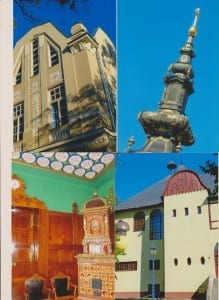
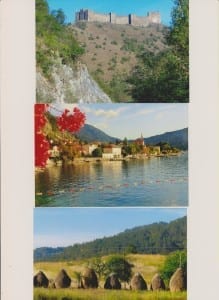
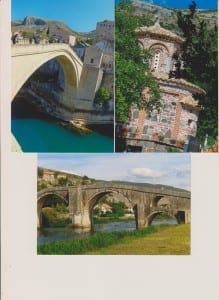
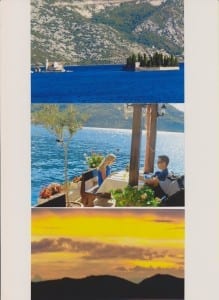
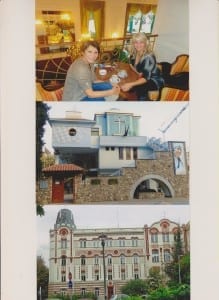
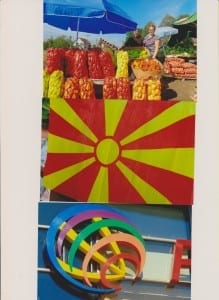
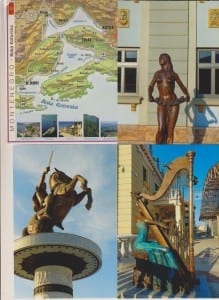
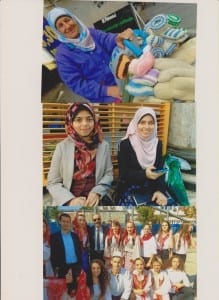
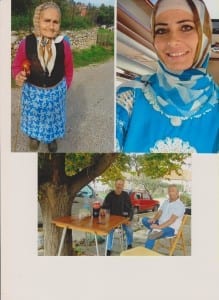
Leave a Reply
Want to join the discussion?Feel free to contribute!